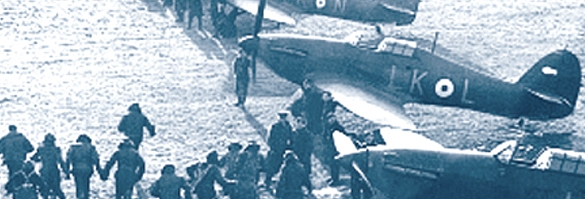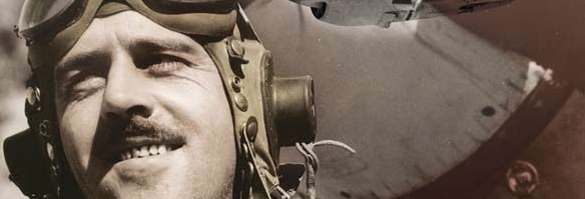The Centenary History of Australia and the Great War: Volume 1, Australia and the War in the Air
Michael Molkentin. Oxford University Press: South Melbourne, 2014. Appeared in online edition of Issue No. 196, March-April 2015 of the ADF Journal.
Dr Michael Molkentin believes good commemoration involves more than the emotion and sentiment currently rife in works purporting to honour the Great War. It needs to begin and end with sound history: rigorously researched and well-written history, which does not claim to be definitive because ‘definitive’ often leads to intellectual stagnation. Above all, history has to be honest, even if the truth revealed is unpalatable.
Australia and the War in the Air, the first volume of the Centenary History of Australia and the Great War, passes Dr Molkentin’s tests. It is rigorously and broadly researched, drawing on private records as well as material from Australian, British, Canadian and German archives, including items not available over 90 years ago to the official historian, Frederick Cutlack. Pitched to a general, interested readership, this is exceptionally well written. It is tightly argued with no digression, and no padding or wasted words.
Much as it is tempting to say that this is the definitive work on Australia’s aviation experiences in the Great War, it is not—and Molkentin makes no such claims. Australia and the War in the Air only touches on the technical aspects of machinery and hardware and, while the author draws on the Australian airmen’s personal experiences to illustrate points, it is not about the men. Even so, Molkentin does not ignore their stories, finely blending them into the narrative. It is a technique he developed in Fire in the Sky (which is about the men) and again expertly deploys.
Australia and the War in the Air focuses on the strategic and operational aspects of air warfare, looking at the subjects from a number of different perspectives, such as policy, political organisation, leadership, training and logistics. Importantly, Molkentin ‘positions the air war’s modern Australian dimension in the imperial and operational contexts that define it’. This is perhaps where the truth is unpalatable.
It would be a natural tendency to think Australia played a key role in the Great War’s aerial arena given an ongoing, falsely-premised belief in the distinctiveness and independence of Australian Flying Corps (AFC) operations. Our involvement, however, was only small. But it was valuable. Indeed, Molkentin acknowledges that ‘although small in size, the breadth of Australian participation permits an evaluation of the role aviation played in the war; that is, the contribution it made to the empire’s effort to engage and destroy the armies of Germany and her allies’. He then expertly analyses and well illustrates that contribution including, for instance, a case study of the AFC’s 2nd and 4th Squadrons to highlight the significant part fighter aircraft played during the climactic battles of 1918.
Following a roughly chronological format, Molkentin covers the origins of Australian military aeronautics, including the foundation of military flying training at Point Cook; the evolution of Australian military aviation organisation and administration; recruitment and training of the AFC; and Western Front and desert operations. He stresses that Australian participation was not limited to the AFC and notes that many men joined the Royal Flying Corps, the Royal Naval Air Service and later the Royal Air Force, which was formed in 1918 after the amalgamation of the other two.
Molkentin concludes with a commentary on the legacy of Australia’s wartime involvement, touching on the prevalence of Great War airmen in civil and military aviation in the interwar years, with a small cadre reaching the peak of their careers in the Second World War. Also of note is his careful discussion of air power which, as a concept, did not exist prior to the Great War, nor in the earliest stages of air warfare. Aeroplanes were there initially to supplement land forces. Accordingly, it is anachronistic to analyse the effectiveness or otherwise of air power in the war’s early stages. Appropriately, however, Molkentin shows the reader the gestation and evolution of the principles of air power.
Australia and the War in the Air has good maps, as well as an abundance of decent-sized photographs illustrating the text which Molkentin sourced from private hands and public archives, including many previously-unpublished ones from the Museum of Australian Army Flying’s collection. These photos are a credit to the museum and its volunteers who have done much diligent work to restore them. All in all, this is a quality production: case bound and stitched with appendices, index, endnotes and a bibliographic essay.
The latter is not usual but, as Series Editor Dr Jeffrey Grey explains, it was included to comment on the strengths, weaknesses and themes encompassed by the subject’s secondary literature. In a sense, this was not necessary as Molkentin deftly reveals his opinion about some of his secondary sources (for instance, he refers to Trenchard’s ‘enamoured biographer’ and A.J. Barker’s ‘classic’ account). I must admit I prefer bibliographies, as I treat them as handy source summaries from which I can springboard to further research. However, I enjoyed Molkentin’s discussion so won’t bemoan the absence of a traditional bibliography. ...
In his preface, Dr Molkentin doffed his hat to the work of former RAAF Historian Dr Chris Clark, and hoped that Australia and the War in the Air would prove a fitting prequel to Dr Clark’s The Third Brother (Allen & Unwin, 1991). It is more than a worthy prelude. This fine work is an important part of an historical and literary continuum of Australia’s Great War air studies, starting with Cutlack’s The Australian Flying Corps in the Western and Eastern Theatres of War 1914–1918 (Angus and Robertson, 1923 and reprints) and including both The Third Brother and Molkentin’s own Fire in the Sky (Allen & Unwin, 2010). Highly recommended.







